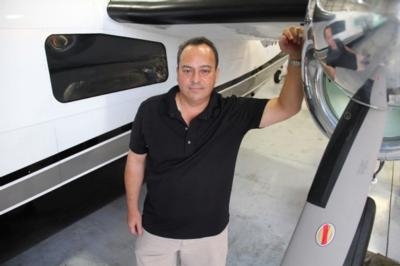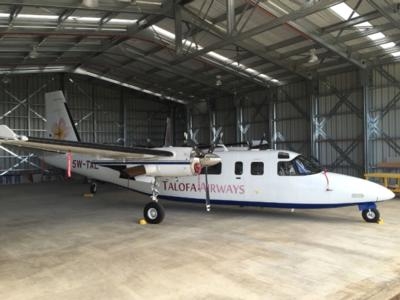Talofa Airways Recently Acquired The Two Aircraft For Service In The Island Nation
"Talofa" is a friendly, welcoming greeting given to visitors to Samoa. It’s also the name of the newest air service in the small, volcanic Polynesian country of, one that will use a pair of Twin Commanders to shuttle residents and tourists between the islands.

Jeffrey Hunter (pictured) is the man behind Talofa Airways. A native Samoan and former pilot for various air carriers in the South Pacific, Hunter saw a need for a small, independent operator that specializes in direct flights between Samoa and American Samoa as well as to and from other islands in this beautiful region of the South Pacific.
Independent Samoa, formerly known as Western Samoa, is mainly comprised of the islands of Savai’i and ‘Upolu, which are just a few miles apart. To the east, separated by about 40 miles of ocean, is American Samoa, an unincorporated territory of the United States comprised of five islands and two atolls. The main passenger travel is between Apia, the capital of independent Samoa, and Pago Pago, the territorial capital of American Samoa, as well as to other more far-flung Polynesian islands including Tonga hundreds of miles to the south.
In addition to the short hop between Samoa and American Samoa, Talofa Airways plans non-stop flights to islands some 300 to 400 miles distant. “I need an airplane to do it comfortably. Some airports don’t have fuel, so we must make the round trip without refueling,” Hunter explains.
Hunter researched aircraft that could safely and efficiently fly regular direct-to-the-islands routes over water. Along with non-stop range, the basic requirements were for a turboprop for reliability reasons, and one certified for high-density seating—but no more than nine passenger seats. That’s because Samoan aviation regulations, which are based on New Zealand’s, are more restrictive and costlier for aircraft with 10 or more passenger seats.
Hunter began looking for candidate aircraft. The search eventually led to a pair of 690B Twin Commanders that Hunter found with the help of Naples (Florida) Jet Center’s Bruce Byerly. The conversion of the two standard-configuration 690Bs to high-density seating (eight in the passenger cabin; the ninth passenger seat is in the cockpit) was led by Terry Wagner at Naples Jet Center.
Naples Jet Services sister company, Eagle Creek Aviation Services, modified the panel in each airplane with Garmin GTN750 and 650 flight management systems, and standardized the autopilots with S-TEC 2100s.

The first 690B was finished in February of this year. Hunter departed Naples for Merced, California, where Gateway Air Center’s Tom Lopes installed a 500-gallon fuselage bladder tank. The ferry tank essentially doubled the Commander’s fuel capacity, which gave Hunter enough fuel plus reserves for the eight-hour leg to Hawaii. From there it was a four-hour leg to a refueling stop on Christmas Island before making the final five-hour flight to Samoa. The second ferry went much like the first.
Both Twin Commanders have now been registered in Samoa and painted in Talofa Airways livery. Hunter has spent the last several months applying to the various aviation authorities in the region, including the FAA, for the many approvals needed to operate scheduled service internationally. He is hoping to begin revenue flights in mid-July.
(Images provided with Twin Commander news release)
 ANN's Daily Aero-Term (04.26.24): DETRESFA (Distress Phrase)
ANN's Daily Aero-Term (04.26.24): DETRESFA (Distress Phrase) Aero-News: Quote of the Day (04.26.24)
Aero-News: Quote of the Day (04.26.24) ANN's Daily Aero-Term (04.27.24): Direct
ANN's Daily Aero-Term (04.27.24): Direct ANN's Daily Aero-Linx (04.27.24)
ANN's Daily Aero-Linx (04.27.24) Aero-News: Quote of the Day (04.27.24)
Aero-News: Quote of the Day (04.27.24)




